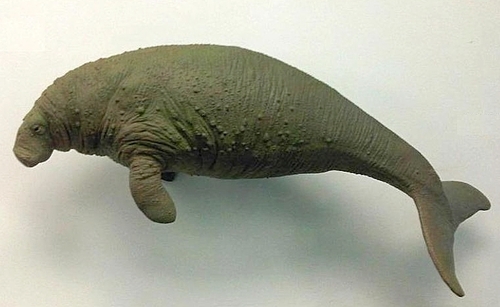
Steller's sea cow
The extinct Steller's sea cow, Hydrodamalis gigas, roamed the icy waters of the North Pacific. This gentle giant, with its kelp-based diet and social nature, played a vital role in marine ecosystems. Its unique absence of a dorsal fin and massive size set it apart from other sirenians.
8000.0 kg
Weight
Length: 45513.0 m
Size
Brown, Grey, Black
Color
Extinct
Conservation Status
Characteristics
Hydrodamalis gigas, commonly known as the Steller's sea cow, was a large marine mammal once found in the North Pacific. It had a robust body, small head, and no dorsal fin. This herbivorous species fed on kelp and other sea vegetation. They were social animals, often seen in groups.
Distribution Range of the Steller's sea cow
The Hydrodamalis gigas, commonly known as the Steller's sea cow, was native to the North Pacific region, specifically the Commander Islands in the Bering Sea. Historically, it was also reported along the coasts of the Aleutian Islands and possibly as far south as the coasts of Japan and North America; however, its range was greatly reduced by the time it was discovered by Europeans in the 18th century.
Steller's sea cow's Habitat
Environmental Conditions
Hydrodamalis gigas inhabited cold, shallow coastal waters with abundant kelp forests. The environment was characterized by cold oceanic temperatures typical of the subarctic region. These waters were nutrient-rich, allowing for dense growth of kelp, which was the primary food source for the species.
Ecological Niche
The Steller's sea cow occupied a niche as a large herbivorous marine mammal, feeding primarily on kelp and other marine vegetation. It played a significant role in its ecosystem by grazing on kelp forests, which could affect the structure and health of these marine habitats. Its slow movement and large size made it vulnerable to predation by humans, which ultimately led to its extinction.
Copyright @ Nature Style Limited. All Rights Reserved.
 English
English